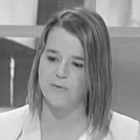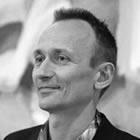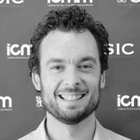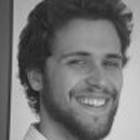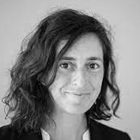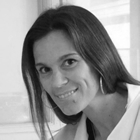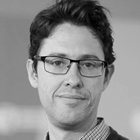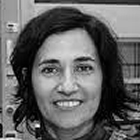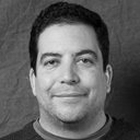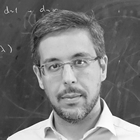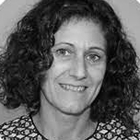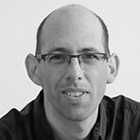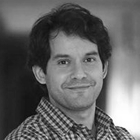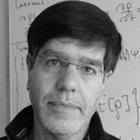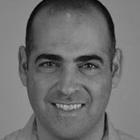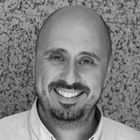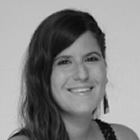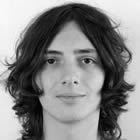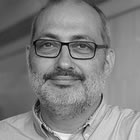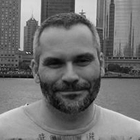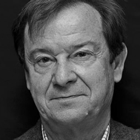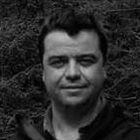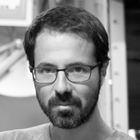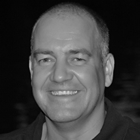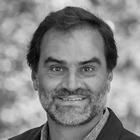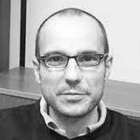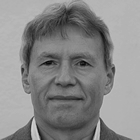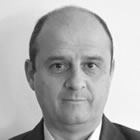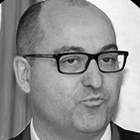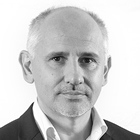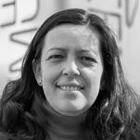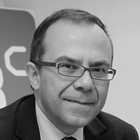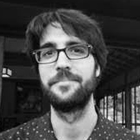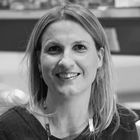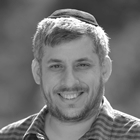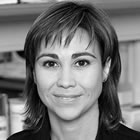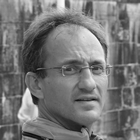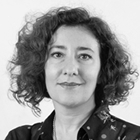 |
 |
|
 |
 |
|
María Rosa Aguilar (ICTP-CSIC, Spain)
Dr. María Rosa Aguilar received her PhD in chemistry from Universidad Complutense de Madrid in 2002 working on polymeric biomaterials. She has been postdoc at University of Brighton and performed scientific stays at UCL (UK), University of Washington (USA) and ESRF (France). She is Tenured Scientist of the CSIC at the Institute of Polymer Science and Technology (ICTP-CSIC) since 2009, where she currently carries out her research activity. Her group has two main research lines: synthesis and characterization of drug delivery systems; and tissue engineering. She is member of the Governing Board of the Specialized Group of Polymers (GEP) from the Royal Society of Physics and Chemistry (RSEFQ), member of the Steering Committee of CIBER-BBN as coordinator of the transfer program; and member of the Governing Board of the Interdisciplinary Platform of CSIC for Sustainable Plastics towards a Circular Economy (SUSPLAST+).
|
| MORE INFO |
 |
 |
 |
|
Peter Bøggild (Technical University of Denmark, Denmark)
Peter Bøggild is professor and group leader at DTU Physics at the Technical University of Denmark. He obtained his PhD in low temperature solid state physics at the Copenhagen University in 1998, and became a full professor in 2013 at DTU. He has worked across numerous areas, including nanomechatronics/robotics, topology optimization, nanometrology, nanotubes/nanowires, surface science, material synthesis and microfabrication, mesoscopic physics and simulations, but is today is leading a group entirely focusing on graphene and other 2D materials, with emphasis on large scale fabrication/applications, electronics, terahertz physics/metrology and material science. He has published more than 200 papers, mostly on 2D materials, and is committed to push fundamental research in two-dimensional materials towards real and viable technologies and applications.
|
| MORE INFO |
 |
 |
 |
|
Andres Castellanos-Gomez (ICMM-CSIC, Spain)
Dr. Andres Castellanos-Gomez is a Research Scientist in the Spanish National Research Council (Consejo Superior de Investigaciones Científicas, CSIC). He explores novel 2D materials and studies their mechanical, electrical and optical properties with special interest on the application of these materials in nanomechanical and optoelectronic devices. Among other recognitions has been appointed Fellow of the International Association of Advanced Materials (IAAM) in 2020, has been included in the Highly Cited Researchers 2018, 2019 and 2020 lists of Clarivate/WOS and has been also recognized with the Young Researcher Award (experimental physics) of the Royal Physical Society of Spain (2016).
|
| MORE INFO |
 |
 |
 |
|
Mattia Cipriani (ENEA, Italy)
Dr. Mattia Cipriani received his PhD in Physics at University of Pisa (Italy) in 2013 and he started to work at ENEA Centro Ricerche Frascati in 2014 as a postdoc. The main focus of his research is inertial confinement fusion and related topics. He performs theoretical and experimental activity on high-power laser interaction with micro-structured plastic materials. From 2019 he is a permanent researcher at ENEA and from 2021 he is the coordinator of the Laserlab-Europe AISBL Expert Group on the topic “Micro- and nano-structured materials for experiments with high-power lasers”.
|
| MORE INFO |
 |
 |
 |
|
Sonia Conesa Boj (TU Delft, The Netherlands)
Prof. Sonia Conesa-Boj obtained her Ph.D. in Nanoscience and Nanotechnology at the University of Barcelona (Spain) in 2011. Afterwards she moved to a postdoctoral research position at EPFL Lausanne, funded by a Marie-Heim Vogtlin personal fellowship awarded by the Swiss National Science Foundation. After a second postdoc in The Netherlands, in 2016 Dr. Conesa-Boj became Assistant Professor at the Department of Quantum Nanoscience and the Kavli Instiuture of Nanoscience at TU Delft, and since 2020 she's tenured Associate Professor there. The focus of her research is developing novel approaches for the growth and characterisation of low-dimensional nanoscale materials, from nanowires to van der Waals layered materials. She has demonstrated how the exploitation of state-of-the-art Transmission Electron Microscopy techniques provide a unique window to unravel the physical properties of novel nanomaterials. Dr. Sonia Conesa-Boj is the author of more than 40 peer-reviewed publications and her research has been supported, among others, by the award of an ERC Starting Grant and a Dutch "Top Kennis en Innovatie" Consortium grant.
|
| MORE INFO |
 |
 |
 |
|
Frederique Cunin (CNRS-ENSCM, France)
Frédérique Cunin is director of research of the Centre National de la Recherche Scientifique (CNRS) in Montpellier, France. Her research focuses on the elaboration of biocompatible porous silicon nanostructures for application in nanomedicine. This includes targeted anti-cancer therapies, gene and cell-based therapies and tissue engineering. Her activity particularly focuses on the material synthesis methods, the control of the morphology and texture of the material, and the development of new surface chemical treatments for biofunctionalization. Her research is also on the comprehension and exploitation of the electronic and optical properties of nanostructured silicon. In 2015, she co-founded the French society of Porous SemiConductors and Oxides (SCOPe). She received the Chercheur d’Avenir prize from the Region Occitanie in 2015, and she was awarded the ACS/SCF Franco-American Lectureship Prize in 2019. She has supervised over 45 students & post-docs and is author of >55 peer-reviewed publications and patents. She’s co-author of more than 100 communications with >15 invited conferences worldwide
|
| MORE INFO |
 |
 |
 |
|
Ricardo Diez Muiño (DIPC / CFM-CSIC, Spain)
Ricardo Díez Muiño holds a PhD degree in physics by the UPV/EHU. He further developed his scientific career in the University of Bordeaux (France) and the LBNL (Berkeley, USA). He is currently Research Scientist at the Centro de Física de Materiales CFM (CSIC-UPV/EHU) and the Director of Donostia International Physics Center (DIPC). He served as Director of CFM from 2011 to 2015. His main fields of research are chemical physics and condensed matter theory, in particular molecular dynamics at surfaces, the theory of electronic excitations, and the theory of photoemission and photoelectron diffraction. He has published more than 100 scientific articles, as well as two books.
|
| MORE INFO |
 |
 |
 |
|
Ruben Esteban (CFM/CSIC, Spain)
Ruben Esteban is a researcher of the Spanish Council for Scientific Research (CSIC) working at the Centro de Física de Materiales in San Sebastián. He did his PhD work on the Max Planck Institute for Solid State Research, receiving his title from the Ecole Polytechnique Fédérale de Lausanne in 2007 for experimental and theoretical work on superresolved near field microscopy. Since then, he has worked on many topics on the theory of nanophotonics, with frequent collaborations with experimentalists. He has special interest on the emergence of quantum effects due to the interaction between metallic systems that support plasmonic resonances and molecules or quantum dots.
|
| MORE INFO |
 |
 |
 |
|
Paula Ferreira (University of Aveiro, Portugal)
Paula Ferreira is a Coordinator Researcher at the University of Aveiro, CICECO – Aveiro Institute of Materials. Paula Ferreira’s research involves synthesis, structural and physical characterization, and processing of nanofunctional and nanoporous materials for several applications from microelectronics to energy, healthcare and environmental applications by bottom-up approaches. She is also interested in sustainable functional bionanocomposites for flexible devices applications. She has been awarded so far over 2000 k€ in career income for engineering research; she has been Principal and Co- Investigator on more than 15 research project awards and 8 projects with industry. She is(has) supervising(ed) or co-supervising(ed) 13 Post-doctoral fellows, 16 PhD, 25 MSc and 25 last year project students and more that 15 initial research fellows. She published over 130 scientific papers, with more than 2810 citations (h-index 31). She participated in over 110 international conferences delivering more than 60 oral presentations.
|
| MORE INFO |
 |
 |
 |
|
Jose-Miguel Garcia-Martin (IMN-CNM, CSIC, Spain)
PhD in Physics (Materials Science) from Univ. Complutense de Madrid (Spain), Marie Curie postdoc at Université Paris-Sud (France) and Fulbright Scholar at Northeastern Univ. (USA). Expert in nanostructures with applications in magnetism, optics and biomedicine.
|
| MORE INFO |
 |
 |
 |
|
Juan Jose Garcia-Ripoll (IFF / CSIC, Spain)
Juan José García Ripoll is a Senior Scientist working at the Institute of Fundamental Physics, in the Spanish Research Council (CSIC). He is a well known researcher in the field of quantum technologies, where he has contributed to the first designs of quantum simulations and quantum computers with ultracold atoms, trapped ions and superconducting quantum circuits. Presently, he combines this line of work with further research into quantum algorithms and quantum-inspired classical computation technologies. Among other duties, JJGR coordinates the Quantum Information Group (Quinfog), the Spanish Network of Quantum Information and Quantum Technologies (RITCE) and the CSIC Platform on Quantum Technologies (QTEP). In addition to this, he has worked at AEI supervising the evaluation of national grants and postdoctoral programmes, and presently advises the Ministry of Science in quantum technologies.
|
| MORE INFO |
 |
 |
 |
|
Raquel González Arrabal (Universidad Politécnica de Madrid / IFN, Spain)
Raquel González Arrabal is professor at the Instituto de Fusión Nuclear Guillermo Velarde (IFN), Universidad Politécnica de Madrid (UPM). After his PhD (2001) at the Technische Unviersität Wien (TUW), she worked as postdoc at the Atominstitut der österreichischen universitäten (ATI/TUW), Centro de Microánalisis de Materiales (CMAM/UAM), Parque Científico de Madrid (PCM) and Instituto de Micro y Nanotecnología (IMN/CSIC). Her field of interest is the developing and testing of materials with improved properties to work under extreme conditions. She has published more than 50 papers in ISI journals. She has more than 100 presentations in conferences all around the world and has lead and participated in different national and international research projects funded by public and private entities.
|
| MORE INFO |
 |
 |
 |
|
Elad Gross (The Hebrew University of Jerusalem, Israel)
Elad Gross is an Associate Professor at the Hebrew University (Jerusalem, Israel) focusing on development and (nano)spectroscopy analysis of heterogeneous catalysts. Elad obtained his B.Sc. (2003,) and Ph.D. (2010) at the Hebrew University of Jerusalem. Following postdoctoral research at UC Berkeley with Gabor Somorjai, he joined the Institute of Chemistry at the Hebrew University and in 2021 was promoted to Associate Professor. Elad list of awards includes the Krill Award (2018), the Israel Vacuum Society Award (2019) and an ERC starting grant (2019).
|
| MORE INFO |
 |
 |
 |
|
Andres Guerrero Martinez (Universidad Complutense de Madrid, Spain)
Dr. Andrés Guerrero-Martínez received his Ph.D. at the Department of Physical Chemistry of the Complutense University of Madrid (2006). Then, he worked as a postdoctoral fellow in the University of Münster (2007) and the University of Vigo (2009), under the supervision of Prof. Luisa de Cola and Prof. Luis M. Liz-Marzán, respectively. In 2012, he became a Ramón y Cajal Fellow back at the Department of Physical Chemistry of Complutense University of Madrid, where he is currently Tenured Professor (2018). His research interest focuses on the development of colloidal nanomaterials and the study of their corresponding physico-chemical properties and correlations with molecular concepts.
|
| MORE INFO |
 |
 |
 |
|
Rafael Gutierrez (TU Dresden, Germany)
Dr. Gutierrez studied Physics at the Dresden University of Technology from 1986-1990 and finished his Ph.D. in Theoretical Physics in 1995 on the topic of Anharmonic Effects in Fullerenes and Superconductors under the supervision of Prof. Jü:rgen Schreiber and Prof. Klaus Becker. He had his first Post-Doctoral stay at the Technical University of Chemnitz with Prof. Thomas Frauenheim until 1999, working on the electronic and structural properties of semiconducting systems. In 1999 he returned to TU Dresden and worked as a Research Associate at the Institute of Theoretical Physics with Prof. Rüdiger Schmidt and PD Dr. Frank Grossmann on the first-principle treatment of electron transport at the molecular scale. From 2003-2007 he worked on quantum transport in DNA and other low-dimensional system with Dr. Gianaurelio Cuniberti and Prof. Klaus Richter at the Institute of Theoretical Physics at the University of Regensburg. Since 2007 he is Senior Scientist and Lecturer at the Chair Materials Science and Nanotechnology by Prof. Gianaurelio Cuniberti. Dr. Gutierrez obtained 2016 his Habilitation on Computational Modelling of Nanomaterials and is since March 2016 Privatdozent. His research activities include the modelling of electron, phonon and spin transport at the nanoscale using first-principle and model-based approaches.
|
| MORE INFO |
 |
 |
 |
|
Ido Hadar (The Hebrew University of Jerusalem, Israel)
Ido Hadar is a Senior Lecturer (Assistant Prof.) at the Institute of Chemistry and Center for Nanoscience and Nanotechnology at the Hebrew University of Jerusalem (Jerusalem, Israel). His research is focused on the study of halide perovskite, novel soft-semiconductors, for detection and light-emission applications. Ido obtained his Ph.D. (2017) from the Hebrew University of Jerusalem, studying optical properties of colloidal nanocrystals at the lab of Prof. Uri Banin. Followed by postdoctoral research at the lab of Prof. Mercouri Kanatzidis at Northwestern University, focusing on the study of novel semiconductors for various photovoltaic, light-emission, and detection applications. Ido was recently awarded the 2021 Samson – Prime Minister’s prize for innovation in alternative energy and smart mobility for transportation, researcher recruitment prize.
|
| MORE INFO |
 |
 |
 |
|
Fernando Herranz (IQM-CSIC, Spain)
Fernando Herranz obtained his PhD (2006) working on supramolecular chemistry and molecular recognition of biomolecules. After that he has been a postdoc at Imperial College London (2007-2009) and Universidad Complutense de Madrid (2009-2012). From 2012 to 2018 he led the Nanomedicine and molecular imaging lab at Centro Nacional de Investigaciones Cardiovasculares (Madrid). In 2018 he got a Tenured Scientist position at the Spanish Research Council (CSIC). His group is focused on the application of nanomedicine in two areas: molecular imaging for the early diagnosis of atherosclerosis and the development of anti-biofilm nanomaterials against drug-resistant bacteria.
|
| MORE INFO |
 |
 |
 |
|
Dorleta Jimenez de Aberasturi (biomaGUNE, Spain)
Dorleta Jimenez de Aberasturi is an experienced Materials Scientist with a broad background in bio-nanomaterials, mainly based on inorganic (nanoparticles)-organic composite materials for biosensing and bioimaging. She obtained her PhD in 2013, in cotutelle between the UPV/EHU and Philipps University of Marburg. During her research career she has published over 45 research articles in high-impact journals which have received over 3000 citations. Since 2019, she is an Ikerbasque Research Fellow at CICbiomaGUNE currently working on the design of 3D-printed organs and disease models.
|
| MORE INFO |
 |
 |
 |
|
Jose Lado (Aalto University, Finland)
Jose Lado is an assistant professor in theoretical physics at Aalto University, in Finland, since 2019. He was an ETH Fellow at the Institute for Theoretical Physics at ETH Zurich, with Prof. Manfred Sigrist and Prof. Oded ZIlberberg from 2017-2019. He got his Ph.D. between 2013-2016 working in the Theory of Nanostructures group at INL, Portugal, led by Prof. Joaquin Fernandez Rossier. Jose Lado's research focuses on designing quantum materials showing radically new quantum properties, especially aiming at states of matter that have not been observed in nature so far.
|
| MORE INFO |
 |
 |
 |
|
Lluis F. Marsal (URV, Spain)
Lluís F. Marsal is Full Professor and Distinguished Professor at the Department of Electronic, Electric and Automatic Engineering of the Universitat Rovira i Virgili, Spain. He obtained his Ph.D. degree in Physics in 1997 from the Universitat Politècnica de Catalunya, Spain. He was postdoctoral researcher at the Department of Electrical and Computer Engineering, University of Waterloo, Ontario, Canada.In 2014, he received the ICREA Academia Award (the highest award for university professors in Catalonia, from ICREA Institute). He is a senior member of the Institute of Electrical and Electronics Engineers and of the Optical Society of America. He is member of advisory and technical committees in several international and national conferences and has been visiting professor at several universities and research institutions. He has co-authored more than 200 publications in international refereed journals, 2 books, 5 book chapters and holds three patents.His current research interests focus on organic and hybrid solar cells and nanostructured materials for optoelectronic devices and low–cost technologies based on micro- and nanoporous materials for biosensing and bio-applications.
|
| MORE INFO |
 |
 |
 |
|
Jesús Martínez De la Fuente (INMA - CSIC / UNIZAR, Spain)
Dr. Jesús Martínez de la Fuente (Barakaldo (Spain), 1975) holds a CSIC research position (Profesor de Investigación) at INMA-CSIC. He created his research group (BIONANOSURF Group) at the Univ of Zaragoza in 2007, becoming internationally recognised in nanomaterials and biofunctionalisation. He has extensive experience in the synthesis and characterisation of novel nanomaterials (mainly gold and magnetic nanoparticles) and their biofunctionalization (with carbohydrates, peptides and nucleic acids) for the development of the next generation of nanobiosensors (using plasmonic nanoparticles and thermal transduction) and nanotherapeutics (gene therapy, photothermotherapy, photoacoustics and theranostic).
|
| MORE INFO |
 |
 |
 |
|
Rodolfo Miranda (IMDEA Nanociencia, Spain)
Rodolfo Miranda obtained a Ph. D. in Physics from the UAM in 1980 and was a Humboldt Fellow under the supervision of Prof. Dr. Gerhard Ertl, Nobel Prize in Chemistry 2007. Since 1990 Prof. Miranda is Full Professor of Condensed Matter Physics at the UAM. He was elected Fellow of the American Physical Society for his contributions in ultrathin film magnetism and is Director of IMDEA-Nanociencia since its creation in 2006. He was awarded with the Miguel Catalán Prize to the scientific career in 2022 for the development in Spain of new experimental techniques in Surface Physics in Ultra High Vacuum, in particular, Scanning Tunneling Microscopy (STM), Angle-resolved Photoemission (ARPES) and Helium Atom Scattering (HAS).
|
| MORE INFO |
 |
 |
 |
|
Carlos Molpeceres (Universidad Politécnica de Madrid, Spain)
Carlos Molpeceres is Director of the Laser Center UPM (www.upmlaser.upm.es [1]) and Full Professor at Department of Applied Physics and Materials Engineering at Universidad Politécnica de Madrid, the largest and oldest Technical University in Spain. He is also Leader of the UPM Research Group Advanced Laser-Based Manufacturing mainly focused in the development of laser micro and nano processing of materials. His group coordinates the activity in Spain of Appolo Hub (www.appolohub.eu [2]), an European network of laser laboratories that provides laser micromachining assessment services for industry partners. He has been or still is Member of different International Committees of Conferences (SPIE, PVSEC, ICALEO, LANE, etc.). Currently his research activity is focused in the development of new laser micro and nano processing techniques, using state of the art laser technology, in the fields of energy, flexible electronics, tissue engineering and translational oncology research.
|
| MORE INFO |
 |
 |
 |
|
Efrén Navarro Moratalla (ICMol - Universitat de València, Spain)
Efrén Navarro-Moratalla is a Ramón y Cajal fellow at the Instituto de Ciencia Molecular (ICMol). He received his PhD in Nanoscience and Nanotechnology in 2009 from the Universitat de València (Spain) and later held a postdoctoral research position in the Massaschusetts Institute of Technology (USA) as a Ramón Areces fellow. Since 2018, he is the group leader of the Crystalline Inorganic Solids Laboratory (Crisol lab) and the principal investigator of several research grants including an ERC Starting Grant (EMAGIN2D). His research interests lie in the multidisciplinary space between chemistry, materials science and the physics of condensed matter, with special interest in the behaviour of electrons and their spins in low dimensional inorganic systems and optoelectronic devices.
|
| MORE INFO |
 |
 |
 |
|
Frank Nouvertne (Raith, Germany)
Dr. Frank Nouvertné received his PhD in Physics in 1998 at Technical University in Aachen and subsequently worked in a postdoctoral position for a year. In 1999, he started working for Raith, first in international Sales, later as Product Manager and currently as a Senior Product Market Manager Electron Beam Lithography (EBL). Managing the entire EBL System portfolio for academic markets, he has collected considerable experience with all kinds of applications in fundamental and applied nanoresearch and complemented his knowhow by leading several (national and european) research projects in conjunction with universities and other research institutions
|
| MORE INFO |
 |
 |
 |
|
Nacho Pascual (CIC nanoGUNE, Spain)
Nacho Pascual is Ikerbasque Research Professor in CIC nanoGUNE since 2012. His research focuses on understanding non-conventional quantum phenomena in individual atoms and molecules using scanning tunnelling microscopy and spectroscopy. In his latest works, he investigated magnetic graphene nanostructures, magnetic impurities on superconductors, or electronic transport through molecular junctions, among other subjects. Nacho graduated in 1991 from the Universidad Autónoma de Madrid, and obtained in 1998 his PhD in Sciences in the Department of Condensed Matter Physics, in this same university. After postdoctoral stays in Berlin (Marie Curie Fellow at the Fritz-Haber Institute der Max-Planck Gesselschaft) and Barcelona (Ramón y Cajal Fellow at the Institut de Ciencia de Materials del CSIC), he was appointed professor at the Free University Berlin. There, he developed his research in the field of Molecular Physics at Surfaces, dealing with various molecular-scale phenomena, from molecular switching behaviour and charge transfer processes to magnetism and superconductivity.
|
| MORE INFO |
 |
 |
 |
|
Jorge Pedros (ISOM-UPM, Spain)
Jorge Pedrós is Associate Professor (PCD-I3) in the Department of Electronic Engineering and the Institute of Optoelectronic Systems and Microtechnology (ISOM) at Universidad Politécnica de Madrid (UPM). He obtained his PhD from UPM in 2007, devoted to surface acoustic wave (SAW) devices in nitride semiconductors. After that, he moved to the Cavendish Laboratory, University of Cambridge (UK), being granted consecutively with Spanish Ministry of Science and Marie Curie Intra-European Postdoctoral Fellowships, where he worked on SAW-driven quantum devices on GaAs-based low-dimensional systems. In 2012, he returned to UPM, where he was a Ramón y Cajal Fellow till his academic tenure. His current research is focused on the technology of graphene and other 2D materials for electronics and optoelectronics, with special emphasis on the dynamic modulation of the material properties using the localized strain and piezoelectric fields induced by a SAW for manipulating light and light-matter interactions
|
| MORE INFO |
 |
 |
 |
|
Ruben Perez (UAM, Spain)
Ruben Perez is a Full Professor at the Universidad Autonoma de Madrid (UAM) and Director of the Condensed Matter Physics Center (IFIMAC), a “Maria de Maeztu” research unit of excellence. He graduated in Theoretical Physics at the Universidad Complutense de Madrid in 1987 and got his Ph.D. from UAM in 1992. After a three-year postdoctoral stay at the Cavendish Laboratory, University of Cambridge, as a Marie Curie Fellow and Research Associate, he returned to UAM, where he leads the Scanning Probe Microscopy Theory and Nanomechanics (SPMTH) Group. His research has focused on the theoretical analysis of probe-based experimental techniques such as scanning tunneling microscopy (STM) and atomic force microscopy (AFM), carbon nanostructures (fullerenes, nanotubes, graphene), oxide materials for catalysis and energy applications, and, more recently, Molecular Nanomechanics, developing efficient tools (for the characterization of the mechanical and frictional properties of biomolecules (DNA, Antibodies) in their native liquid environment.
|
| MORE INFO |
 |
 |
 |
|
Fernando Rey (ITQ / CSIC-UPV, Spain)
Fernando Rey is Research Professor at the CSIC and the director of the Institute of Chemical Technology, ITQ, in Valencia (Spain). His research interest is focussed in the synthesis and characterization of new porous inorganic solid materials, mostly zeolites, with tailored properties for their use in industrial applications, principally in catalysis and adsorption processes. He is co-author of more than 180 articles in high impact scientific journals, numerous presentations in congresses and currently his ‘h-index’ is 61. Also, he appears as co-inventor in more than 45 patents related to the synthesis of new porous materials and their application in different industrial processes. Some of these patents have been licensed to industries.
|
| MORE INFO |
 |
 |
 |
|
Antonio Rivera de Mena (Universidad Politécnica de Madrid / IFN, Spain)
Antonio Rivera carried out his PhD at the Nuclear and Microelectronics Institutes (TU-Delft). Then, we worked at Universidad Autonomy de Madrid and CSIC in projects related to nano-materials fabrication and modification by irradiation. He is currently working as a staff researcher at Instituto de Fusión Nuclear (UPM). Part of his work is devoted to the study of radiation-matter interaction and the development of new materials for applications in fusion energy. He is currently applying methods for radiation-matter interaction to the nanoscale and he devoted part of his research activity to the study of plasmonic systems subjected to high electronic excitation.
|
| MORE INFO |
 |
 |
 |
|
Stephan Roche (ICREA/ICN2, Spain)
Prof. Stephan Roche is a theoretician with more than 25 years’ experience in the study of transport theory in low-dimensional systems, including graphene, carbon nanotubes, semiconducting nanowires, organic materials and topological insulators. He has published more than 200 papers in journals such as the Review of Modern Physics, Nature Physics, Nano Letters and Physical Review Letters and he is the co-author of the book titled “Introduction to Graphene-Based Nanomaterials: From Electronic Structure to Quantum Transport” (Cambridge University Press, 2020-second edition). He received the qualification to supervise PhD students from the Université Joseph Fourier (Grenoble, France) in 2004, and since then he has supervised more than ten PhD students and about 25 postdoctoral researchers in France, Germany and Spain. In 2009 Prof. Roche was awarded the Friedrich Wilhelm Bessel Research Award by the Alexander Von-Humboldt Foundation (Germany) and, since 2011, he has been actively involved in the European Graphene Flagship project as deputy leader of the Spintronics Work Package (WP). He will serve as leader of this WP from April 2020 till March 2023, as well as Division leader of the Graphene Flagship.
|
| MORE INFO |
 |
 |
 |
|
Celia Rogero (CFM/CSIC, Spain)
Dr.Celia Rogero is a Tenured Researcher at the Spanish Council for Scientific Research (CSIC). She got her PhD from UAM in 2003. From 2004 to 2009 she was postdoctoral researcher at the Department of Chemistry of the University of Newcastle upon Tyne and Astrobiology Center in Madrid, CAB (INTA-CSIC). She is expert in the study of physico-chemical properties of metal-semiconductor (insulator) interfaces. Her actual main research line is the bottom-up fabrication with atomic precision of devices, specially that involved ferromagnetic or superconductor materials. She is the co-leader, together with Prof. J.E. Ortega, of the Nanophysics Laboratory Group is the actual Vicepresident of the Spanish Vacuum Society (ASEVA)
|
| MORE INFO |
 |
 |
 |
|
Josep Samitier Martí (IBEC, Spain)
Prof. Josep Samitier is Director of IBEC and Full Professor in the Physics Faculty (Electronic Dep.), University of Barcelona. From February 1984 to June 1985 he was visiting research fellow at the Philips Electronic Laboratory, Paris, France. From March 2001 to June 2005 Prof. Samitier was Deputy Head of the Barcelona Science Park (PCB), and in 2003 he received the Barcelona city Prize of the Barcelona Council in the area of technology. Prof. Samitier is the coordinator of the Spanish Platform on Nanomedicine and the president of the Associació Catalana dEntitats de Recerca (ACER).
|
| MORE INFO |
 |
 |
 |
|
Gabriel Sanchez Santolino (UCM, Spain)
Gabriel Sánchez Santolino received his BSc and Ph.D. (2015) in Physics from the Complutense University of Madrid. During his Ph.D., he also carried out part of his research at the STEM group at Oak Ridge National Laboratory. He then joined the Crystal Interface Laboratory at the University of Tokyo as a postdoctoral researcher from 2015 to 2017. In 2017, he obtained a Juan de la Cierva postdoctoral fellowship and joined the 2D Foundry group at the Spanish National Research Council in the Institute of Materials Science of Madrid. In 2019 he joined the Eva Olsson Group at Chalmers University of Technology. From November2019, he is a Jóvenes Investigadores (JIN) Researcher at the Department of Materials Physics at the Complutense University of Madrid. His main research interest is the direct visualization of local electromagnetic field structures by Differential Phase Contrast Scanning Transmission Electron Microscopy (DPC-STEM), and four-Dimensional Scanning Transmission Electron Microscopy (4D-STEM) for diffraction and differential phase contrast imaging.
|
| MORE INFO |
 |
 |
 |
|
Ester Segal (Technion, Israel)
Dr. Segal is a Professor of Biotechnology and Food Engineering at the Technion – Israel Institute of Technology, where she also serves as the Deputy Executive Vice President for Research. Her research focuses on the broad interface between materials science and biotechnology to address challenges in medical diagnostics, food safety, and therapy. She received her PhD in Chemical Engineering from the Technion in 2004 and later trained at the University of California – San Diego, where she was a Rothschild postdoctoral fellow. Dr. Segal has authored more than 100 peer-reviewed journal articles, reviews, book chapters, and patents. She has received numerous prestigious fellowships and prizes over the course of her career, most recently the 2019 Advances in Measurement Science Lectureship Award by the American Chemical Society
|
| MORE INFO |
 |
 |
 |
|
Daniel Sharon (The Hebrew University of Jerusalem, Israel)
|
| MORE INFO |
 |
 |
 |
|
María J. Vicent (Centro de Investigación príncipe Felipe, Spain)
Professor MJ Vicent received her PhD in 2001 in chemistry on solid supports from Univ. Jaume I after several scientific stays in Prof. Fréchet’s lab. Univ. California, Berkeley (USA). Then, she moved to more biomedical oriented research, initially with Instituto Biomar, and then at the Centre for Polymer Therapeutics with Prof. Duncan after the award of a Marie Curie Postdoc fellowship in 2002. In 2004, María joined Centro de Investigación Príncipe Felipe (CIPF) as research associate through a Marie Curie Reintegration contract and was promoted to head of Polymer Therapeutics Lab in 2006. Currently, she is also the responsible for the Screening Platform, a Specialist site in the ERIC EU-OpenScreen and coordinates the Advanced Therapies Program at CIPF. She is director at large of the Controlled Release Society (CRS), part of the Strategic Committee of the Valencian Agency of Innovation (AVI), Member of the International Advisory Board of IN2UB and Foundation Hospital Provincial Castellón (CFHPC).
|
| MORE INFO |
 |
 |
 |
|
Felix Zamora (UAM, Spain)
Félix Zamora (Universidad Autónoma de Madrid; UAM) received his PhD in 1994 at UAM under the supervision of Prof. C. Navarro-Ranninger. After a postdoctoral stay in University of Dortmund (Germany) with Prof. Bernhard Lippert; and in University of Virginia (USA) with Dr. Michal Sabat, he rejoined the UAM, where he became “Profesor Titular” in 2002 at the Inorganic Chemistry Department. He is also research associate member of IMDEA Nanoscience Foundation, Institute for Advanced Research in Chemical Sciences (IAdChem), and Condensed Matter Physics Institute Center (IFIMAC). He has been recently awarded by the Spanish Royal Society of Chemistry with Research Excellence Award in 2015. From 2004, he is Principal Investigator of the research group “Nanomaterials Lab” (7 PhDs, 2 postdocs, 4 Professors). He is author of 157 papers in top-tier journals (e.g. Nature Nanotech., J. Am. Chem. Soc., Angew. Chem., Adv Mater, etc), 8 review articles, 4 book chapters and 8 patents (3837 citations, h-index = 34). He acts as active evaluator of several scientific organisations (e.g. National Science Foundation-USA, Swiss National Science Foundation, FNRS Belgium, etc). Member of the RESPORE (the Ile-de-France network in porous solids science) international Advisor Committee.
|
| MORE INFO |
 |
 |
 |
|
Zeila Zanolli (Utrecht University, The Netherlands)
Since July 1st, 2020, Zeila Zanolli joined Utrecht University as associate professor in Quantum Chemical Modelling at the Chemistry Department/Debye Institute for Nanomaterials Science. Until then (2018 – 2020) she was a Ramon y Cajal Fellow at ICN2, Barcelona (Spain), an excellence program of the Spanish Ministry for Economy, Industry and Competitiveness (MINECO). In 2016 – 2018, she leaded the Nanospintronics Group at the Physics Dept of RWTH Aachen University, funded by the DFG. In 2015 – 2012 she was Marie Curie Intra-European Fellow at Forschungszentrum Jülich (Germany). She is a research group leader and Steering Committee member of the European Theoretical Spectroscopy Facility (ETSF). Since 2018, Dr. Zanolli serves in the Executive Committee of the MaX (MAterials design at the eXascale) European Centre of Excellence which enables materials modelling, simulations, discovery and design at the frontiers of the current and future High Performance Computing (HPC), High Throughput Computing (HTC) and data analytics technologies. Since 2019 Dr. Zanolli serves in the Editorial College of SciPost Physics, a Free Open Access publication portal. In 2017 she has been elected Fellow of the Young Academy of Europe (YAE), a pan-European network of scientists active in science policy, and since 2018 she is board member and treasurer of the YAE.
|
| MORE INFO |
 |
 |
 |
|
|
 |
|
 |
|



















